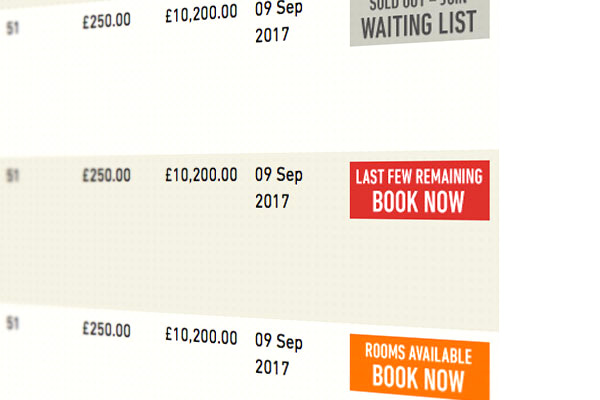
The way your website is put together can gently lead users towards what you want them to do: view a piece of content, sign up to a mailing list, buy a product…
Everything from where you place page elements to what pages link where affects how likely people are to follow your desired path.
It’s a subtle art. Here’s a primer.
Mapping the entry points
Start by defining where users are likely to arrive at your website. Firstly, which channel:
- Direct (typing your URL into their browser)
- Google (organic search results)
- AdWords (paid search results)
- Social
- Referrals
Which channel they’ve come from which usually dictate which page they land on. Direct arrivals will usually start at the homepage, but social and referrals will probably come in via content e.g. blog posts.
Giving them what they want
Having analysed who comes in where, the next question is what they’ve arrived for. The entry point is a strong indicator of what stage of the conversion funnel they’re at.
If they’ve come direct, they’re already pretty far down – already aware, and already interested in what you’re selling.
If they’ve come via social, chances are they’ve just learnt about you through a blog post or video, and hard sales is not the right approach. A softer angle is needed to coax them down the funnel.
Understand what they’ve come to your site looking for, and give it to them. No more, no less.
Giving them what you want
The trick, of course, is doing it in such a way that benefits you as well.
With that in mind, it’s important to have clear goals that you want to direct users to from different stages of the conversion funnel, which will also align with what they want from you.
Here are some example user flows:
|
Funnel stage |
Entry channel |
Landing page |
Goal |
|
Awareness |
Social |
Blog post, video etc. |
More content |
|
Interest |
Referral |
Whitepaper, infographic etc. |
Subscribe to email and/or social |
|
Desire |
Google (organic) |
Homepage |
Browse products, contact to discuss |
|
Action |
Google (paid) |
Product pages |
Buy now |
Sculpting the path
Having considered what kind of users will come into which pages on your site, you can then use its content – copy, design and layout – to gently guide them towards what you want their next step to be.
There may be multiple ways forward – users at different stages of the user funnel will end up on the same pages – this is called a “stacked user flow”. But the easier you make it to get to where they want (and where you want them to go) the more likely they will go there.
With that in mind, every page should:
- Have minimal navigation options
- Make it clear what the user will get when following which links
Following both these principles will help take more users down the funnel, and ultimately towards conversion.
Wisetiger can help you build an end-to-end user flow – from first awareness to final purchase. Speak to us today about our web design services.
0 Comments